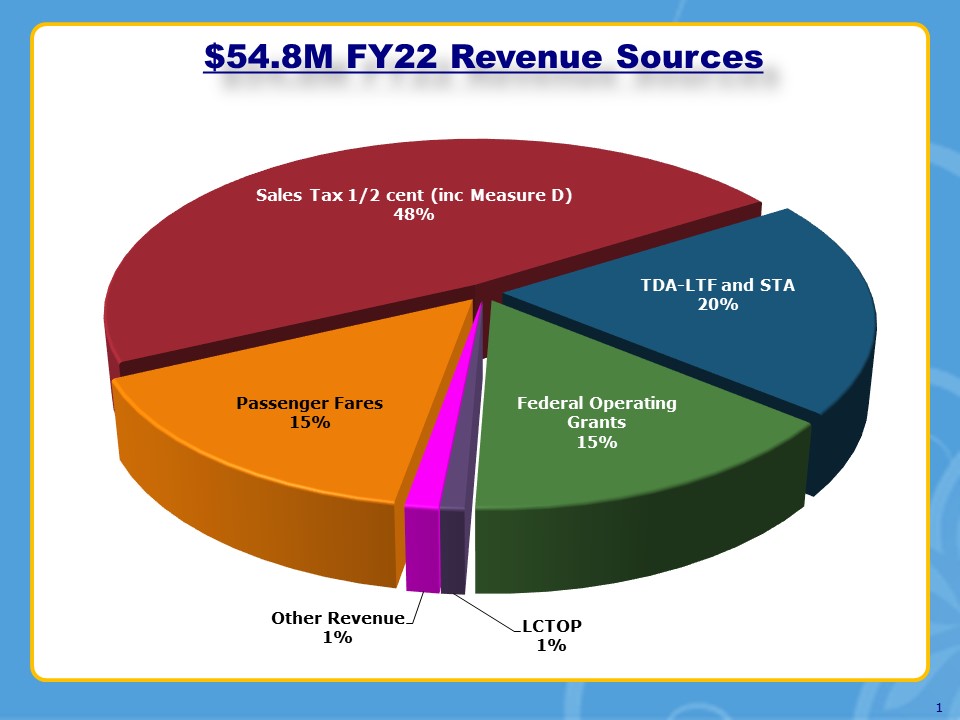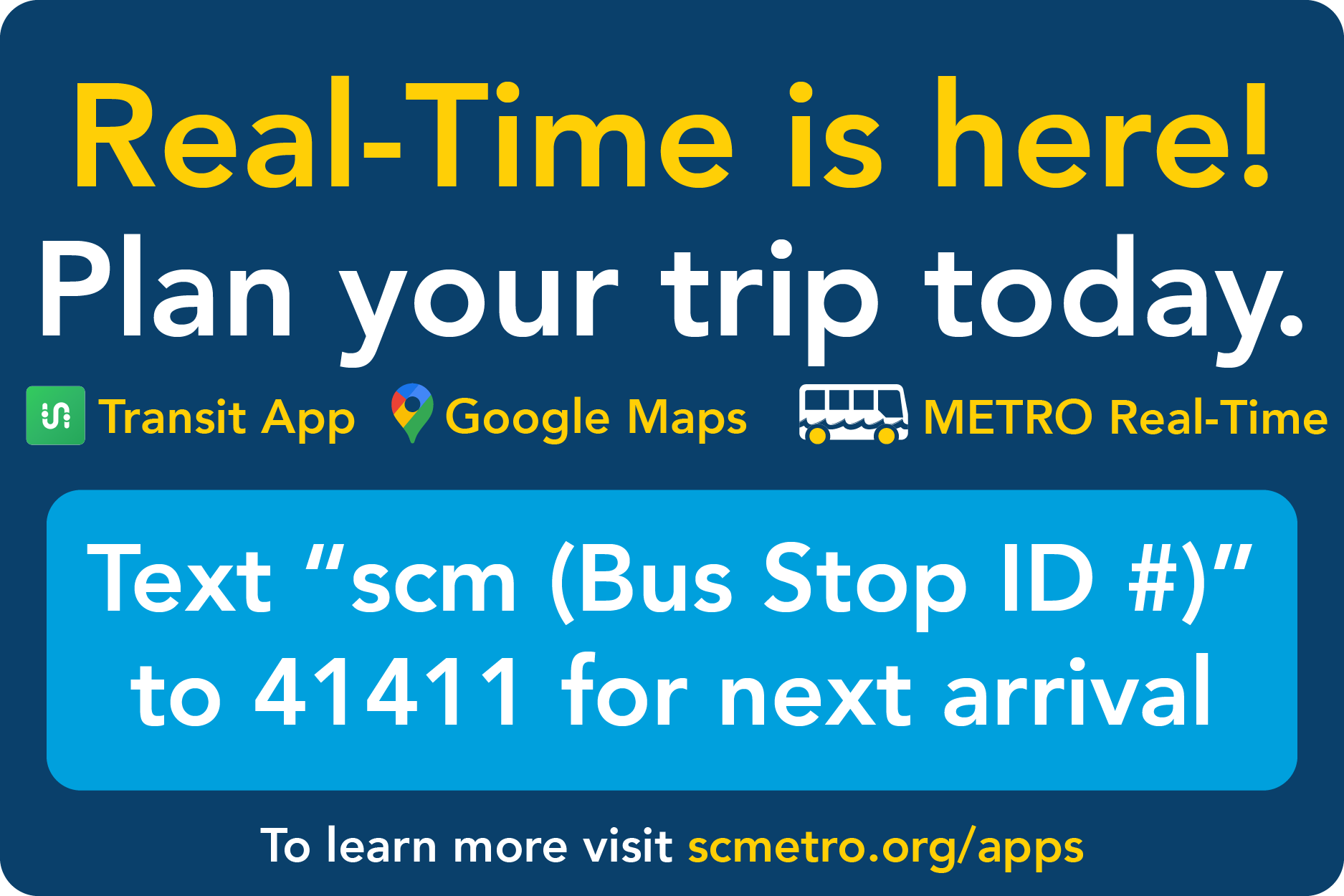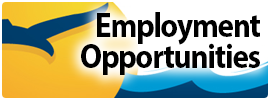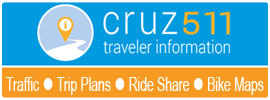Frequently Asked Questions
General FAQs
How many routes does METRO currently operate?
How many Transit Centers does METRO maintain?
What services does METRO provide?
What mobile apps does METRO offer?
Do I need a permit to park overnight at Cavallaro Transit Center?
How can riders stay up to date with route alerts and schedule changes?
How can customers purchase tickets and passes?
Do the Ticket Vending Machine's (TVMs) accept cash?
Are there holidays that METRO does not offer service?
What is the Watsonville Circulator and does it offer free fares?
What rules should I follow to ride the bus?
What should I do if someone is harassing me on the bus or at a METRO Transit Center?
Customer Service FAQs
Which Transit Centers are staffed with Customer Service Representatives (CSRs)?
How can customers reach METRO Customer Service?
How can a customer inquire about and claim lost items?
METRO's Funding
What type of grant funding does METRO receive?
What is METRO's current funding for Operations?
What is the difference between operating grants vs. capital grants?
What are formula grants and how does METRO use them?
What are discretionary (competitive) grants and does METRO receive them?
What funding did METRO receive from the CARES Act, CRRSA and ARPA Funds?
To submit a new question, please create a Customer Service Report here.
General FAQs:
Q: How many routes does METRO currently operate?
A: METRO currently operates 24 routes. Routes include 4, 10, 15, 18, 19, 20, 22, 35/35A, 40, 41, 42, 55, 66, 68, 69A, 69W, 71, 72/72W, 74S, 75, 79, 91X, WC, and Hwy-17 Express.
Q: How many Transit Centers does METRO maintain?
A: Four. Below is a list of METRO Transit Centers:
- River Front Transit Center (Temporary while Pacific Station is under development) 603 Front St., Santa Cruz, CA
- Watsonville Transit Center: 475 Rodriguez St., Watsonville, CA
- Cavallaro Transit Center: 246 Kings Village Road, Scotts Valley, CA (Not Staffed)
- Capitola Mall Transit Center: 1855 41st Ave., Capitola, CA (Not Staffed)
Q: What services does METRO provide?
A: METRO offers fixed-route and paratransit services (ParaCruz) throughout Santa Cruz County and operates a commuter service via the Highway 17 Express to San Jose Diridon Station. In addition, METRO offers a microtransit service, Cruz On-Demand, operated by METRO's trained ParaCruz operators, extending METRO's service area three quarters of a mile from any of METRO's fixed bus routes, excluding Highway 17 and the UCSC campus.
Q: What mobile apps does METRO offer?
A: METRO offers several mobile apps that allow riders to locate a bus schedule, obtain real-time arrival information, book a Cruz On-Demand or ParaCruz ride, purchase a pass, or purchase an overnight parking permit at our Cavallaro Transit Center in Scotts Valley. All apps are available for download on the App Store and Google Play. For more information on all METRO apps visit scmtd.com/apps
- Transit App: Allows riders to view METRO bus schedules
- Ecolane App: Riders who want to schedule a Cruz On-Demand ride or a ParaCruz ride have the convenience of viewing available trips and booking their own rides
- METRO Splash Pass: Mobile ticketing app for use on fixed-route, Highway 17 Express, and Cruz On-Demand
- Passport Parking App: To purchasing overnight parking at our Scotts Valley Cavallaro Transit Center
Q: Do I need a permit to park overnight at Cavallaro Transit Center?
A: Yes, overnight parking permits are required for parking at Cavallaro Transit Center in Scotts Valley. Parking permits can be purchased using the “Passport Parking” App. When prompted in the App, enter zone number 9506 for Cavallaro Transit Center. For more information, visit our App Page.
Q: How can riders stay up to date with route alerts and schedule changes?
A: METRO keeps riders informed of route changes through several platforms:
- Schedule-by-Stop Alerts: Allows riders to search for any Location (Bus Stop or Transit Center) and view today's schedule at that location in complete detail, or text message the location and receive just the immediate schedule
- Subscriber Alerts: Subscribers receive route alerts via email or text message, regarding delays, schedule changes, general information, and upcoming agency events
- Headways: METRO's quarterly publication that contains route and schedule information.
Q: How can customers purchase tickets and passes?
A: There are several ways in which customers can purchase tickets and passes, including:
- In person at a Customer Service window at either Santa Cruz METRO Center or Watsonville Transit Center. Available weekdays 8AM-5PM, with the exception of lunch from 12PM-1PM and breaks in which the windows are closed.
- Via METRO's mobile ticketing app, Splash Pass, available for download on the App Store and Google Play
- Via a Ticket Vending Machine (TVM) located at all four of METRO's Transit Centers and Cabrillo College. Available 24/7.
- Via one of METRO's Pass Vendors, such as Boulder Creek Pharmacy
- Via mail-order. Mail-Order forms are available in each edition of Headways and online at scmtd.com/mail-order. Available to both fixed-route and ParaCruz customers (Diminishing Balance Account).
- Online at scmtd.square.site
- Via email for bulk orders, bulkorders@scmtd.com
Q: Do the Ticket Vending Machine's (TVMs) accept cash?
A: Yes, all of METRO's TVMs are set up to accept cash. Visit here for TVM locations and updates.
Q: Are there holidays that METRO does not offer service?
A: Yes, there are a few holidays per year that METRO does not provide service or provides reduced service. These typically include Independence Day, Labor Day, Thanksgiving Day, Christmas Day, New Year's Day, and Memorial Day in which only the Highway 17 Express offers weekend level service. Please see our Holiday Schedule for details.
Q: I often see empty buses and why is METRO running the service during the hours in which there is low ridership?
A: There are many reasons why you may see a nearly empty bus providing service. The most common reason is that a majority of METRO's service is structured around "peak hours" when riders are commuting to work or school. During these times, ridership is heavy in one direction, but not the other. This is best shown by ridership on the HWY 17 bus between Santa Cruz and San Jose. During the morning peak hours there are more Hwy 17 riders going to San Jose than there are coming to Santa Cruz. During the evening peak hours, the opposite is true. This creates full buses in one direction and relatively empty buses in the other.
During "off peak" hours in the middle of the day or late at night there tends to be fewer riders in all directions. During these times, METRO does reduce the number of buses that provide service. However, we cannot stop service entirely because METRO is a public agency and must provide service to all parts of the county throughout the day. METRO provides lifeline service to rural areas and underserved communities; throughout Santa Cruz County. These routes do not always have full buses but are an important service to Santa Cruz Community. We constantly monitor the ridership on our routes and adjust service levels as appropriate every 3 months.
Another reason a bus may be empty is that it may be "deadheading". Deadheading is when a bus either starts or finishes its route with "Out of Service" displayed on its head sign. Every night METRO buses are parked at the bus yard meaning each bus must get from there to the start of its route the next day. For example, buses that operate on the local Watsonville routes must deadhead from the bus yard to Watsonville at the beginning and end of their routes.
Ultimately, depending on the time of day, direction of travel and operational considerations one may see a bus with few or no customers on board.
Q: Why run these big buses when there are fewer customers, and instead, why not purchase smaller vehicles that carry fewer customers?
A: METRO does not use smaller buses during "off-peak" hours because of two reasons.
First, this would require METRO to purchase and maintain a new fleet of off-peak buses. METRO is currently in the process of updating and replacing our full-sized bus fleet. Funding for that comes from fixed sources and grants that require a competitive nation-wide application process. Therefore, METRO can't afford to both replace its current fleet AND acquire a new fleet of smaller buses for off-peak operation.
Second, the cost of operating smaller buses is not much different from full sized ones and smaller vehicles would have to be replaced more frequently than larger buses. For operating cost, this is mostly because regardless of the vehicle in use, there would still be an operator being paid to drive the bus. Because METRO cannot save money operating smaller buses, they are an expensive investment (nearly $100,000 each) that would not make much business sense for the agency as a whole.
Q: What is the Watsonville Circulator and does it offer free fares?
A: METRO's Zero-Emission Watsonville Circulator Operating Project deployed two of METRO's battery-electric buses on a new circulator route in downtown Watsonville in the fall of 2021. This project also includes a free fare pilot program offered to all riders for one year.
The new route provides more frequent service to desirable commercial and professional destinations in Watsonville. It runs from Noon-7:45pm and provides 16 daily round trips, seven days a week, 52 weeks out of the year.
The project will not only supplant the greenhouse gas emissions from a fossil-fueled bus, but it will also create a more productive route with ridership anticipated to exceed the current route. The route connects the downtown transit center with primary retail and medical destinations in Watsonville.
This new route operates a clockwise loop and a counter-clockwise loop from Watsonville Transit Center, serving Main St, Green Valley Rd, Freedom Centre, Freedom Blvd, and Lincoln St., connecting commuters with existing local and intercity Bus Lines 69A, 69W, 71, 72/72W, 74S, 75, 79, and 91X. The Circulator Route is envisioned to become a critical link for our community. For more information visit scmtd.com/WC
Q: What rules should I follow to ride the bus?
A: For the safety of you, other riders, and our operators METRO does ask all riders to follow our Code of Conduct Policy while onboard our vehicles, at Transit Centers, and while at a bus stop. Please visit scmtd.com/en/riders-guide/riding-tips for details. To view METRO’s complete Code of Conduct Policy visit scmtd.com/Code-of-Conduct
Q: What should I do if someone is harassing me on the bus or at a METRO Transit Center?
A: Our number one priority is your safety. METRO operators are trained and have continuous access to dispatch, supervisors and security personnel. METRO’s security services include security cameras on our buses and at transit centers, as well as 24-hour security guard coverage at transit centers. We also deploy a field security guard service that can respond to any situation within our service area.
If you see or hear something that causes you concern, please let us know immediately. The entire METRO team is prepared to respond with assistance. The following are ways that you can notify us:
- Notify a security guard stationed at a METRO transit center
- Notify a bus driver/operator
- Notify a METRO representative at the customer service window located at Pacific Station in Santa Cruz or at the Watsonville Transit Center
- Call METRO at (831) 425-8600
- File an incident online using our Customer Service Ticket and select “Safety & Security” at service.scmtd.com
Customer Service FAQs:
Q: Which Transit Centers are staffed with Customer Service Representatives (CSRs)?
A: METRO Center in Santa Cruz and the Watsonville Transit Center both have onsite staff available to assist at the Customer Service windows, weekdays from 8AM - 5PM, with the exception of lunch from 12PM - 1PM and breaks in which the windows are closed.
Q: How can customers reach METRO Customer Service?
A: Customers can reach Customer Service in several ways:
- Visit a Customer Service window, weekdays between the hours of 8AM - 5PM. Available at METRO Center & Watsonville Transit Center.
- Use a Customer Service Call Kiosk, 7 days a week between 8AM - 5PM, which allows customers to virtually connect with a Customer Service Representative (CSR) using a one-way video calling system where the CSR will be able to view the customer placing the call. Available at METRO Center & Watsonville Transit Center. (Bilingual service available)
- By Phone at (831) 425-8600 or (831) 425-4664 for ParaCruz reservations (Bilingual service available)
- Via a Customer Service Report (Ticket). Compliments, suggestions, or complaints can be filed at scmtd.com/cs
Q: How can a customer inquire about and claim lost items?
A: Customers can inquire about lost & found items by calling METRO Customer Service during business hours or filing a Customer Service Report, scmtd.com/cs.
- Items are held at Santa Cruz METRO Center and may be claimed during business hours with an appointment.
- Lost bicycles can be claimed directly from security personnel.
- Legal photo ID is required for all claims.
METRO's Funding
Q: What type of grant funding does METRO receive?
A: Santa Cruz METRO relies upon grants from a number of other entities throughout the year for more than 35% of its FY20 operating revenue and 85% of its FY20 capital funding.
Transportation Development Act (TDA), State Transit Assistance (STA) and the Federal Transit Administration (FTA) annually allocate funds by formula while others such as the Monterey Bay Unified Air Pollution Control District's AB2766 Motor Vehicle Emissions Reduction Program and the California Department of Transportation (Caltrans) discretionary planning grants are competitively awarded based on merit.
Santa Cruz METRO relies on both formula and discretionary grant revenue to support its operating and capital budgets.
Q: What is METRO's current funding for Operations?
A: Santa Cruz METRO utilizes five primary sources of revenue to operate its public transit services: passenger fares, sales and use taxes, local transportation funds (TDA), federal funds, and other non-transportation related revenues (including advertising income, investment income, and rental income).
Santa Cruz METRO receives a ½-cent sales tax levied on all taxable sales i Santa Cruz County, collected and administered by the California Department of Tax and Fee Administration (CDTFA). Additionally, in November 2016, the majority of Santa Cruz County approved Measure D, a ½-cent sales tax measure designed o fund a comprehensive and inclusive package of transportation improvements. Santa Cruz METRO receives 16% of the Measure D Sales Tax. Sales Tax revenues account for approximately 48% of METRO's operating revenue sources as per the FY22 Budget, adopted in June 2021.
The California Transportation Development Act (TDA) provides two major sources of funding for public transportation: the Local Transportation Fund (LTF) and the State Transit Assistance Fund (STA). These funds are for the development and support of public transportation needs that exist in California and are allocated to areas of each county based on population, taxable sales, and transit performance. STA funding is derived from the statewide sales tax on diesel fuel. Since fiscal year 2014, STA funding had been on the decline. On April 28, 2017, Governor Brown signed Senate Bill (SB) 1 (Chapter 5, Statutes of 2017), known as the Road Repair and Accountability Act of 2017. SB 1 augments the base of the STA program essentially doubling the funding for this program. Santa Cruz METRO's financial position continues to improve with this much-needed influx of operating and capital funding. The combined share of TDA and STA Operating Assistance is approaching 20% of METRO's operating revenues.

Q: What is the difference between operating grants vs. capital grants?
A: Think of the operating budget as "running buses" and the capital budget as "buying buses." State and federal discretionary (competitive) grants do not typically provide revenue for the operating budget, and local grants that might provide operating funds are few and far between Nearly all state and federal grant opportunities are for capital improvements and augment METRO's ability to buy buses and build/maintain facilities.
Q: What are formula grants and how does METRO use them?
A: State and federal formula grants come to METRO as a result of legislation; usually require an annual application; and always require follow-up information on how METRO used the money. While this is a cumbersome and time-consuming process, METRO always follows the dictated processes and never risks or jeopardizes its state and federal formula grant allocations. These state and federal formula dollars are typically used for operations; are sometimes flexible for use in both operations and capital; but are most often restricted to capital only.
Q: What are discretionary (competitive) grants and does METRO receive them?
A: In any given year, there are a number of state and federal discretionary grant programs offered. METRO always submits highly competitive grant applications for programs for which it qualifies.
When grants become available for competition, they are always way oversubscribed. Typically, there are nine to ten times as many applications nationwide as actual grant awards, and the amount awarded is a fraction of the amount requested.
In FY20, METRO received $38,361,399 in State & Federal Formula Grants for operating assistance.
In FY20, METRO received $1,836,302 in State & Federal Formula Grants for capital assistance. In addition, in FY20, METRO received $1,560,000 in State and Federal Discretionary Grants for capital assistance.
Q: What funding did METRO receive from the CARES Act, CRRSA and ARPA Funds?
A:
- $20,560,417 in FFY20 Federal Section 5307 CARES Act funds operating assistance for public transit service within the Santa Cruz and Watsonville urbanized areas. Per the CARES Act, the grant requests 100% federal share. This application utilizes CARES Act funding to prevent, prepare for, and respond to coronavirus. The application contains two projects, ALI 30.09.08, operating assistance, for all its service for the period 1/20/20 - 1/30/21 within the Santa Cruz and Watsonville urbanized areas.
- FFY21 Section 5307-8 CRRSAA application in the amount of $13,551,006 representing 100% federal share of the total eligible amount. This application utilizes CRRSAA funding to prevent, prepare for, and respond to coronavirus.
- FFY21 Section 5307-8 ARPA application in the amount of $26,020,080 representing 100% federal share of the total eligible amount. This application utilizes ARPA funding to prevent, prepare for, and respond to coronavirus. This grant is requesting $26,020,080 of FFY21 Federal Section 5307-8 ARPA funds to support operating costs as defined by NTD Reporting System for the period of 9/1/21 - 5/31/22 within the Santa Cruz and Watsonville urbanized areas.
- $584,617 in in FFY20 Federal Section 5311 CARES Act funds for operating assistance for public transit service within the Santa Cruz and Watsonville rural areas. Per the CARES Act, the grant requests 100% federal share. This application utilizes CARES Act funding to prevent, prepare for, and respond to coronavirus.
- $524,932 in in FFY21 Federal Section 5311 CRRSAA funds for operating assistance for public transit service within the Santa Cruz and Watsonville rural areas. Per the CRRSAA, the grant requests 100% federal share. This application utilizes CRRSAA funding to prevent, prepare for, and respond to coronavirus.

 Español
Español  English (UK)
English (UK) 





